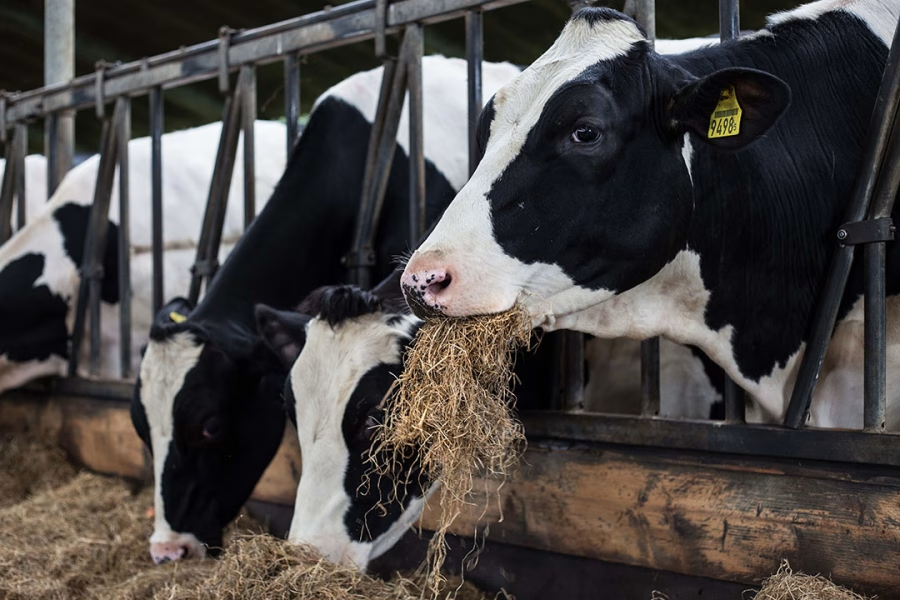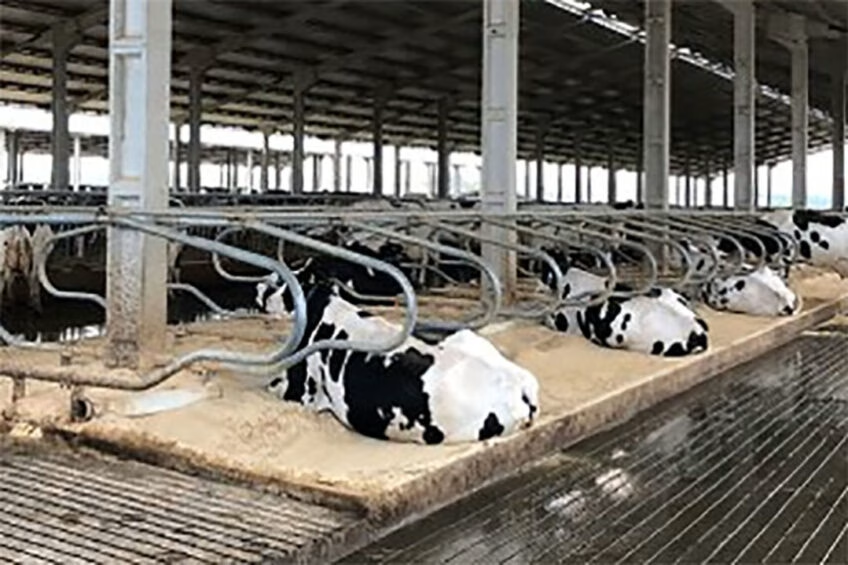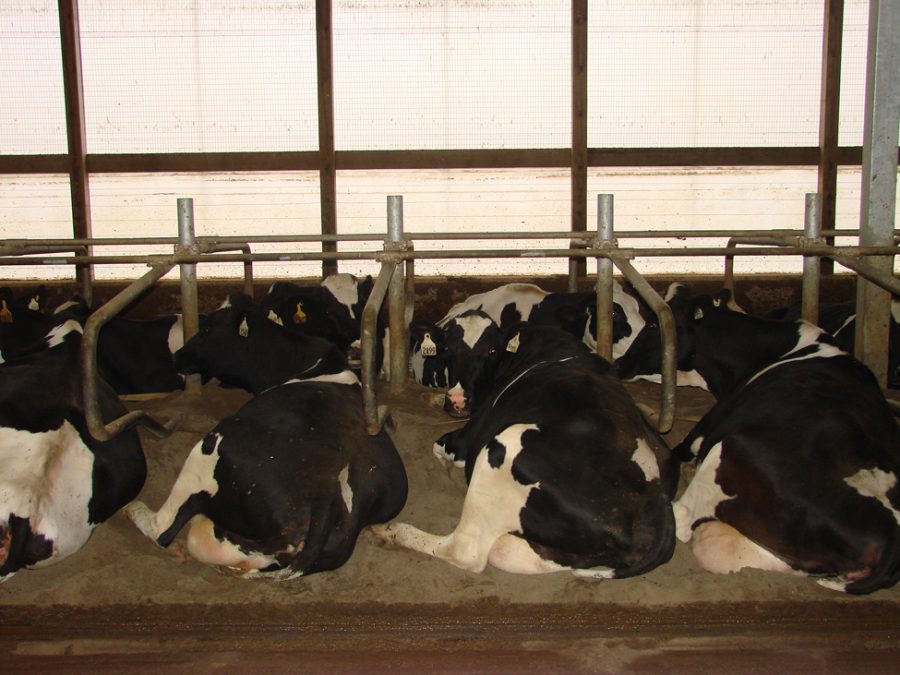Boost your dairy cow’s milk yield and efficiency with rumen native microbes. Curious how these supplements can enhance your herd’s performance? Discover the benefits now.

Increasing populations and income levels, particularly in developing nations where dairy consumption is on the rise, bring greater demand and higher production efficiency to the dairy industry. The profitability and sustainability of dairy farms, which are crucial for the global dairy industry, can be significantly enhanced by the adoption of rumen-native bacteria in dairy cow diets. This innovative approach, backed by rising worldwide dairy demand, holds the promise of boosting milk yields and feed efficiency, thereby increasing production and profitability.
Rumen native bacteria might transform dairy farming. Naturally found in the cow’s rumen, these microorganisms have shown potential for increasing feed efficiency and lactation performance. Mainly targeted strains such as Pichia kudriavzevii and Clostridium beijerinckii have shown appreciable increases in milk yield and quality.
The effect of dietary supplements, including these microbes, on feed efficiency and productive performance in Holstein dairy cows is investigated in this paper. We will discuss:
- How does cow digestion interact with rumen bacteria to increase milk output?
- Specific bacterial additions and their noted advantages.
- Consequences for present research and methods of dairy farming.
Without compromising cow body weight, microbial supplements can raise milk yield, boost ECM production, and increase feed efficiency, resulting in more profitable herds and possible profit gains. By analyzing current studies, we hope to emphasize the possibilities of rumen native bacteria and provide helpful advice for dairy producers to improve herd performance and condition.
A Comprehensive Study on Microbial Additives in Holstein Cows
Run on 117 Holstein cows, the study “Dietary supplementation of rumen native microbes improves lactation performance and feed efficiency in dairy cows” assessed two particular microbial additions. The cows were arranged according to parity: first-time calving (nulliparous) or calving more than once (multiparous). The cows were further divided within these parity groups according to their pre-treatment energy-corrected milk (ECM) yield to provide a standard starting point.
Each parity block in a randomized complete block design was split and then assigned at random to one of three treatments over 140 days:
- CON (Control Group): 100 grams of corn meal without microbial additives (15 primiparous and 25 multiparous).
- G1 Group: 100 grams of corn meal containing a blend of 5 grams of Clostridium beijerinckii and Pichia kudriavzevii, featuring 4 × 107 cfu of C. beijerinckii and 1 × 109 cfu of P. kudriavzevii (14 primiparous and 24 multiparous).
- G2 Group: 100 grams of corn meal with 5 grams of a composite of C. beijerinckii, P. kudriavzevii, Butyrivibrio fibrisolvens, and Ruminococcus bovis, containing 4 × 107 cfu of C. beijerinckii, 1 × 109 cfu of P. kudriavzevii, 1 × 108 cfu of B. fibrisolvens, and 1 × 108 cfu of R. bovis (15 primiparous and 24 multiparous).
Cows housed in ventilated tie-stall barns fitted with rubber mattresses and sand bedding to preserve consistent and ideal conditions ran the study from October 27, 2020, until July 20, 2021.
Accurate measurements and thorough data collection were necessary for this work. Daily logs of body weight (BW), milk yield, and dry matter (DM) intake guaranteed exact control of general health and nutritional intake. Twice-weekly evaluations of body condition score (BCS) helped closely monitor the cows’ physical state.
The analysis of milk composition twice a week lets researchers track changes in quality. Milk samples on days 60 and 62 also gave thorough fatty acid profiles. This careful approach guaranteed that the information represented the actual effects of the dietary supplements.
The Result: Boosted Milk Yield and Feed Efficiency
| Treatment | Milk Yield (kg/d) | ECM (kg/d) | Fat Yield (kg/d) | Total Solids (kg/d) | ECM per kg of DMI (kg/kg) |
|---|---|---|---|---|---|
| Control (CON) | 39.9 | 37.9 | 1.31 | 4.59 | 1.72 |
| G1 | 41.3 | 39.3 | 1.37 | 4.75 | 1.76 |
| G2 | 41.5 | 39.9 | 1.40 | 4.79 | 1.80 |
The study emphasizes how much feeding dairy cows microbial additions help them. From 39.9 kg/day in the control group to 41.3 kg/day and 41.5 kg/day in groups G1 and G2, respectively, cows given these supplements showed greater milk yields. Analogous increases in energy-corrected milk (ECM) production from 37.9 kg/day in the control group to 39.3 kg/day (G1) and 39.9 kg/day (G2). Furthermore, in the treatment groups, fat output rose from 1.31 kg/day to 1.37 kg/day and 1.40 kg/day.
With an increase from 4.59 kg/day in the control group to 4.75 kg/day and 4.79 kg/day in the experimental groups, total solids output improved significantly. Measured as ECM per kilogram of dry matter intake (DMI), feed efficiency also improved from 1.72 kg/kg in the control group to 1.76 kg/kg (G1) and 1.80 kg/kg (G2). These findings highlight how well microbial additions might improve milk production volume and quality.
The long-term effects of incorporating microbial additives into dairy farming are not only significant but also promising. The improved milk yield and quality directly translate into higher income and improved product quality, ensuring the economic viability of dairy farms in a competitive market. Moreover, the enhanced feed efficiency achieved through microbial additions streamlines operations and increases their sustainability, thereby optimizing production and ensuring a bright future for dairy farming.
Enhancing Milk Fat Composition with Microbial Additives
The study found that adding microbial additives (MAs) to Holstein cow diets greatly improved milk fat composition. Pre-formed fatty acids, particularly those with more than 16 carbons, showed an especially high yield. Additionally, unsaturated fatty acids, including α-linolenic acids (C18:3) and linoleic acids (C18:2), increased. While α-linolenic acid rose from 2.46 g/d to 2.82 g/d, linoleic acid levels rose from 30.9 g/d to 35.4 g/d.
Known for their health advantages—anti-inflammatory effects and heart health contributions—unsaturated fatty acids help make the milk more marketable to health-conscious consumers, perhaps enabling higher pricing. More pre-formed fatty acids also indicate better energy use by the cows, reflecting better general health and output. These microbial additions thus not only improve the quality of milk but also offer a great chance to maximize dairy farm activities.
A Practical Roadmap for Integrating Microbial Additives
The findings of this research provide a practical roadmap for dairy producers, cattle nutritionists, and researchers to integrate microbial additives into dairy farming. The selection of the appropriate type is crucial, and the study highlights the effectiveness of specific bacterial additions such as Clostridium beijerinckii and Pichia kudriavzevii. To identify the best fit for your herd, consult with a cattle nutritionist. This practical advice empowers you to make informed decisions for your dairy farm.
Following the study’s methodology, consider introducing additives to your herd in a controlled manner. Begin by gradually adding the additive as a top dress for the cows’ diets, then monitor their milk yield, feed intake, and overall condition. This approach allows for a comprehensive assessment of the effects under your control.
Take into account the cost-benefit aspect. While the initial cost of microbial additives may seem significant, the study indicates substantial returns in terms of increased milk yield and improved feed efficiency. Enhanced yields of key milk components, such as unsaturated and pre-formed fatty acids, could lead to higher-quality dairy products with greater market value.
The long-term effects on herd health and productivity are also significant. Frequent additive use helps to support general herd health, stabilize rumen function, and raise body condition scores. Longer cow lifespans and reduced veterinary costs resulting from this often help increase microbial additions’ cost-effectiveness.
Success with microbial additions depends on constant evaluation and careful control. Stay updated on fresh studies and modify your methods based on practical results to maximize the benefits in milk yield, feed efficiency, and herd health over time.
The Bottom Line
Adding rumen-native bacteria to dairy cow diets shows excellent potential to increase feed efficiency and productive performance. Clostridium beijerinckii, Pichia kudriavzevii, Butyrivibrio fibrisolvens, and Ruminococcus bovis added to their feed improved milk yield by up to 4%, energy-corrected milk (ECM) by up to 5.3%, and milk fat composition, all without increasing dry matter intake (DMI). For dairy producers trying to maximize output while controlling feed expenses, cows are more effectively turning feed into milk.
By raising good fatty acids, the study shows that microbial additions increase milk volume and enhance milk quality. In dairy production, this double advantage can result in more sustainability and profitability. Thus, adding these microbial supplements proves that dietary supplementation of rumen native bacteria improves lactation performance and feed efficiency in dairy cows, providing a practical method to attain higher efficiency and output in dairy herds.
Key Takeaways:
- Dietary supplementation with specific microbial additives enhanced productive performance in Holstein cows.
- Milk yield, energy-corrected milk (ECM), fat output, and feed efficiency all saw significant improvements.
- The study included a control group and two treatment groups, each receiving different combinations of microbial additives.
- Researchers noted an increase in pre-formed fatty acids in the milk, particularly unsaturated fatty acids like linoleic and α-linolenic acids.
- Body condition scores (BCS) tended to improve with the addition of microbial supplements.
- The experimental period lasted from October 27, 2020, to July 20, 2021, offering robust data across multiple seasons.
- Despite variations in starting days in milk (DIM) among cows, the overall positive trends in milk production and composition were consistent.
- The findings suggest that integrating microbial additives into dairy diets could foster enhanced milk production and better feed efficiency, ultimately contributing to the sustainability and profitability of dairy farming.













